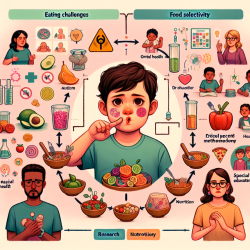Understanding Rare Neuromuscular Diseases: A Call to Action for Practitioners
As Special Education Directors and practitioners, we often encounter students and individuals with unique medical challenges. One such challenge is Sporadic Late-Onset Nemaline Myopathy (SLONM), a rare neuromuscular disorder that can lead to progressive weakness and respiratory failure. A recent case report titled "68-year old man with progressive weakness and ventilator dependent respiratory failure: a case report of sporadic late onset nemaline myopathy" provides valuable insights into this condition and underscores the importance of thorough diagnostic evaluation.
The Case at Hand
The case involves a 68-year-old man who was transferred to an intensive care unit for ventilator-dependent respiratory failure. Initially misdiagnosed with vascular Parkinsonism, further investigation revealed elevated muscle-specific enzymes and HMG-CoA Reductase antibodies. A muscle biopsy confirmed the presence of nemaline bodies, leading to a diagnosis of SLONM.
Key Takeaways for Practitioners
For practitioners, this case highlights several critical aspects:
- Comprehensive Evaluation: A detailed patient history is crucial. Symptoms such as progressive weakness and elevated muscle enzymes should prompt consideration of neuromuscular causes.
- Diagnostic Tools: Utilize a combination of pulmonary function tests, electromyography, and muscle biopsy to accurately diagnose conditions like SLONM.
- Interdisciplinary Approach: Collaboration with neurologists, pathologists, and respiratory specialists can enhance diagnostic accuracy and treatment planning.
Encouraging Further Research
SLONM remains a rare and challenging diagnosis, often lacking effective treatments. This underscores the need for ongoing research to better understand its pathogenesis and develop targeted therapies. Practitioners are encouraged to contribute to research efforts by documenting cases, sharing findings, and participating in clinical studies.
Implementing Learnings in Practice
Practitioners can improve their skills by integrating the following strategies:
- Stay Informed: Regularly attend conferences, webinars, and read publications on neuromuscular diseases.
- Network with Peers: Engage with other professionals to share insights and experiences.
- Advocate for Patients: Ensure patients receive comprehensive care and support, including access to therapy services like those provided by TinyEYE.
By embracing these practices, practitioners can enhance their ability to diagnose and manage rare neuromuscular diseases, ultimately improving patient outcomes.
To read the original research paper, please follow this link: 68-year old man with progressive weakness and ventilator dependent respiratory failure: a case report of sporadic late onset nemaline myopathy.










